This was published 6 years ago
Antarctica travel tips: 20 ways to cope with visiting the world's harshest continent
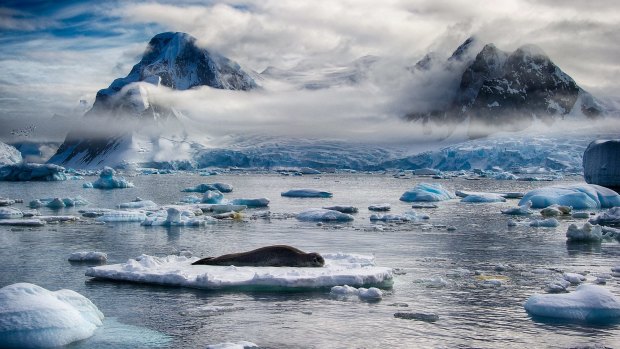
Seal at Cuverville Island.
As Norwegian explorer Roald Amundsen readied his dogs and sleds for the final day's dash to the South Pole, "I tried to work up a little poetry … the ever restless spirit of man, the mysterious, awe-inspiring wilderness of ice – but it was no good" the Last Viking admitted to his journal. It was the only element of this expedition that the first human to reach 90 degrees south had failed to prepare for.
Exactly 105 years later to that day, aboard a Norwegian ship, I reached mainland Antarctica for the first time in my life; visiting for a different purpose, but harbouring the same desire as Amundsen to existentially connect with the southernmost continent. Knowing I would be sharing limited shore time over just a handful of days with 350 other explorers, I arrived with a detail of tactics and left with an even more comprehensive system.
TACTIC 1: EXPEDITION SAIL
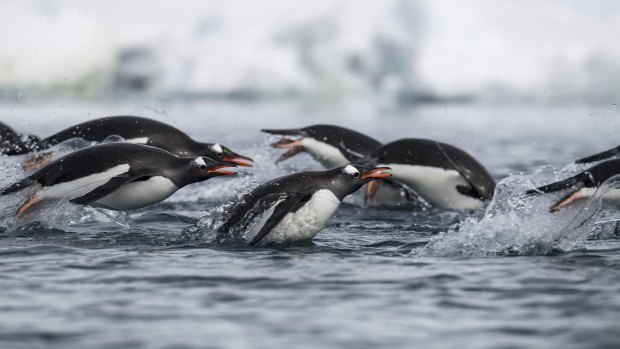
Gentoo penguins.
We're a touchy subject, we humans. As babies, we're constantly grabbing for things to interpret and know our world. As adults, we can imagine or make an educated guess at how our senses will respond but actual experience cannot be underestimated – the result is visceral. If you're going all that way to Antarctica then get your body on land (if you can) to feel the crunch of snow under your feet, hold ice and rock in your hands, stand in the wind as it moves across the land, listen to the penguin colonies, let the guano fill your nostrils. These are things a passing pleasure cruise or joy flyover won't allow. I travelled on Hurtigruten's expedition ship MS Midnatsol.
TACTIC 2: GO BLANK
There is something to be said for a good old-fashioned blind date. Rather than poring over images of Antarctica before my voyage and building up expectations, I sailed south with as limited a mental picture of what I was going to see as possible. The outcome was archaic: each new vision of the landscape and seascape was a revelation and filled me with what I reckon was probably awe.
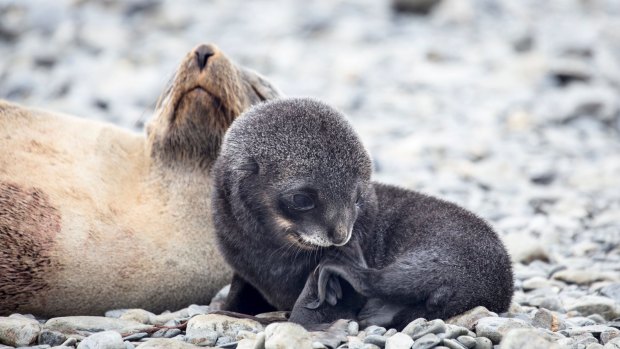
Seals at Fortuna Bay. Credit: Hilde Foss
TACTIC 3: GET PHYSICAL
Expedition sailing to Antarctica demands physicality. Tender boat landings are often onto rocky beaches, there are steep staircases at Cape Horn and walking routes at Deception Island, Neko Harbour and Damoy Point head uphill. The less you need to focus on your body, though, the freer you are to appreciate your surroundings.
If you're not generally very active, training in the months before your trip will pay off. Yoga and Pilates improve strength, balance and confidence but I'm personally all for incidental exercise. Walk up and down the steep uneven ground in your neighbourhood, take stairs over escalators when there's a choice, practise tender exit and entry moves by swivelling 180 degrees on your breakfast stool while lifting your legs over the dog.
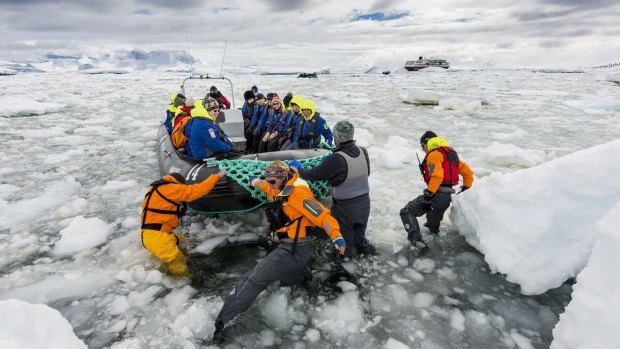
Landing at Cuverville Island.
TACTIC 4: PREPARE WELL FOR SWELL
The Drake Passage, separating Chile and Argentina's Tierra del Fuego from the Antarctic Peninsula, is not always the Drake Lake. At home beforehand I sought out prescription anti-nauseas without the antisocial side-effect of drowsiness. They worked like magic and, apart from being a bit fuzzy in the head and wild in the eyes for crossings, I was otherwise fully functional.
TACTIC 5: PLAN FOR THE PASSAGE
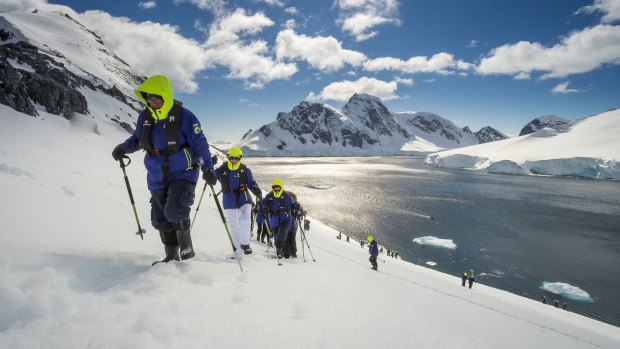
Hiking at Orne Harbour.
A long haul flight, sudden change of diet and the ship's airconditioning can wreak havoc on even the most regular digestive tract, so taking daily fibre supplements from the moment you leave home should mean everything goes pretty smoothly.
TACTIC 6: DRESS FOR THE WEATHER
Summer temperatures on the peninsula's coastline typically hover around zero but can be a lot lower. When you're too cold, it's virtually impossible to think about anything else. But overdressing isn't the answer – that can make you sweat and then you'll be chilled by your body's moisture.
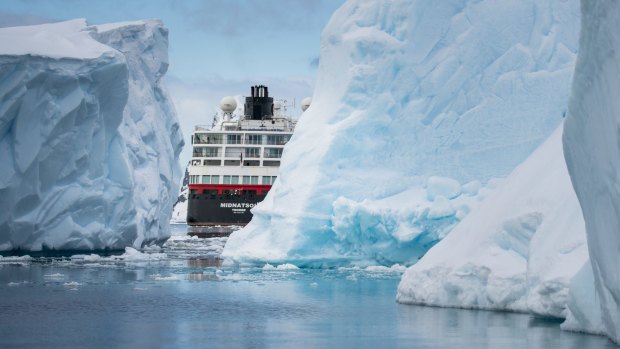
Midnatsol between icebergs.
It was easy to overheat while waiting inside the ship before tender cruising or landings so I started coming to reception in long johns, trousers and boots wearing a merino T-shirt or two on the top half and carrying my selection of warm tops for the day's conditions. When the group before mine was called, I quickly layered up. Once onshore, I'd stow my PFD and not-very-breathable waterproof jacket into a backpack and adjust the other layers as necessary.
TACTIC 7: TRY NOT TO GET SICK
Getting sick is the worst but avoiding sickness on a ship takes vigilance. Using hand sanitiser is imperative, but being paranoid at the buffet is also important. For instance, think about how many hands – and not necessarily clean ones – have been on the serving spoon you just touched before using that same hand to pick up your bread or a piece of fruit or peel a boiled egg. Exactly.
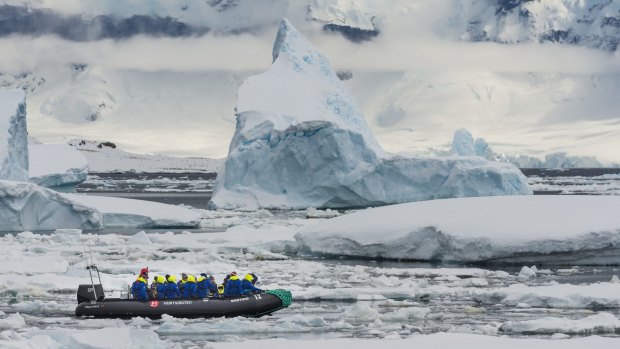
Tender boat cruising at Cuverville Island.
TACTIC 8: DON'T MISS A THING
Expedition teams on Hurtigruten ships are experienced adventurers of all ages from everywhere who want nothing more than to get you onshore as often as possible. But weather conditions rule so, if you're thinking of delaying your first small step on Antarctica, keep in mind that operations could cease at any time and not necessarily resume.
TACTIC 9: WATCH OUT
Despite the abundance of wildlife in Antarctica, that pod of orca, the young crabeater seals, those chinstrap penguins weighing down an ice floe are one-off scenes, so sometimes it's worth cutting a meal short or skipping the sauna session to have a good look. Our captain made it easy for us by prioritising birds and animals over full-steam-ahead; one day we sat mid-channel for hours surrounded by diving pods of feeding humpback whales.
TACTIC 10: HAVE SOME RESPECT
All the creatures you'll encounter in Antarctica are attempting to thrive in one of the world's harshest climates. Accounting for that when you're in their space – by being quiet, stepping off penguin highways as they're coming through and not edging as close as possible to seals for the sake of a photograph – is environmental friendliness and good karma.
TACTIC 11: CONSIDER A DIP
Swimming is an exercise in true immersion. I didn't do it in Antarctica because my mother told me she'd never speak to me again if I did and, due to the fact she rarely gets a say in any of the stuff I get up to, I obeyed. With a mixture of envy and relief, I watched as friends stripped to their swimmers in 3-degree air on the pebbled beach of Half Moon Island and took turns striding into 3-degree water, doing a few strokes and walking back out again with their eyes shining. One even danced on the beach in the sunshine.
TACTIC 12: LIMIT THE LENS
Photography can help you understand a place, remember it afterwards and share it with others, but chronic camera use will block you from the actual experience. Even the on-board photography instructor suggested spending time getting to know Antarctica before trying to capture it.
TACTIC 13: RISE WITH THE SUN
December is the month of summer solstice when, on the peninsula, there are just a few hours between sunset and sunrise and the rest is a well-lit ever-changing spectacle. Antarctic light is always extraordinary but dusk and dawn are the finest hours so maybe set a super early alarm one day or just make the most of your jet lag.
TACTIC 14: STAY OUT
Time ashore is generally never more than 90 minutes at any landing location. To spend extra hours off the ship, consider joining up for the kayaking, photography or snowshoeing workshops.
TACTIC 15: WALK THE DECK
MS Midnatsol's promenade deck allows you to circle the ship like a skua looking for penguin eggs. Whether it was heavy swell, snow, strong wind or a calm sunshiny day, my eyes always shone more brightly after a few laps.
TACTIC 16: SEEK THE QUIET SPACES
Both on and off the ship you can find places for solitude to reflect, contemplate or just have a break from other people. From 2018, it will even be possible to sail Antarctic waters for periods of complete silence on board Hurtigruten's new hybrid diesel-electric expedition ships MS Roald Amundsen and MS Fridtjof Nansen.
TACTIC 17: LET OTHERS DO THEIR THING
Everyone's different but, when you're living in the close quarters of a ship, you tend to notice exactly how different. But getting fixated on or distracted by what others are doing is a waste of precious time and energy.
TACTIC 18: DON'T FEEL THE NEED TO SWEAR
On my first trip to Europe, as a teenager travelling with my family, I promised postcards to all my friends at home. It didn't take long to realise that fulfilling that was robbing me of my own travel experience. I am no less loved for refusing, to this day, to send postcards or bring home souvenirs.
TACTIC 19: DO WHATEVER IT TAKES
Lying on my jacket in the sun on a white hillside staring out to the icebergs of Neko Harbour listening to my favourite music while eating snow helped me connect with Antarctica, but that won't necessarily work for everyone.
TACTIC 20: DON'T BE AMUNDSEN
"I suppose it was too early in the morning," Amundsen wrote in mid-December 1911. He was so caught up in the practicalities of the mission and the interpersonal relationships of his expedition team and preoccupied by getting the news of his upcoming achievement to the media, he had nothing left over. Instead "I abandoned my effort, after coming to the conclusion that each sledge gave one more the idea of a coffin than anything else, all the bases being painted black".
TRIP NOTES
MORE
FLY
Qantas, with airline partner Latam, offers daily direct flights from Sydney to Santiago de Chile. Melbourne passengers will need to transit in Sydney for a direct international flight. See www.qantas.com.au
SAIL
The first of Hurtigruten's 16-day Discover Patagonia and Antarctica departs in early December. Expedition voyages, with on-board accommodation ranging from basic cabins to spacious suites, start at $10,690 a person. Phone Bentours on 1800 221 712. See www.bentours.com.au
Elspeth Callender travelled as a guest of Hurtigruten.
FIVE MORE POLAR DESTINATIONS TO EXPLORE WITH HURTIGRUTEN
ARCTIC CANADA
Follow the east coast of Nunavut's Baffin Island where Inuit people have lived for more than 4000 years in an extreme northern landscape and climate.
GREENLAND
Under the midnight sun, journey into the Arctic to see the country's active volcanoes and geysers, abundant wildlife and relics from the Viking era.
ICELAND
Debatably polar, but not to be excluded on a technicality, hike lava fields, see hot springs, visit historic settlements and hear the folk tales of elves and trolls while circumnavigating the country.
NORTHERN NORWAY
Every day, 11 custom-built Hurtigruten's expedition ships sail goods, local passengers and tourists to 34 ports between the city of Bergen and the town of Kirkenes – 400 kilometres north of the Arctic Circle.
SPITSBERGEN
Hurtigruten has been sailing to the largest island of the Svalbard archipelago since 1896. Yet this extension of northern Norway could be another planet, with its Russian mining ghost towns, and where polar bears outnumber people.
Sign up for the Traveller Deals newsletter
Get exclusive travel deals delivered straight to your inbox. Sign up now.